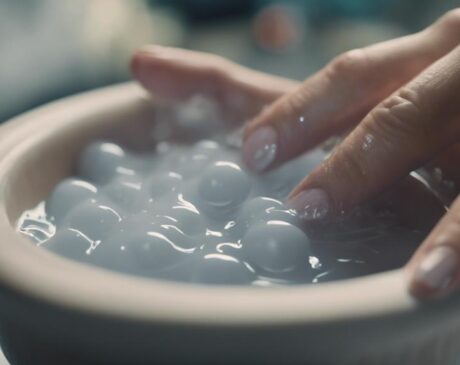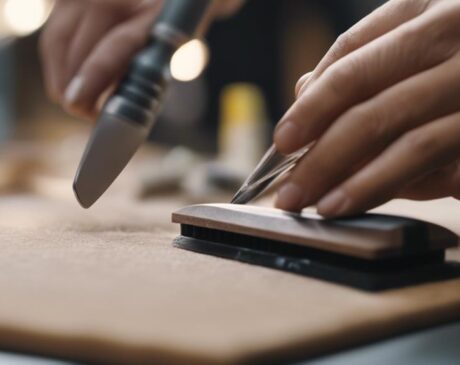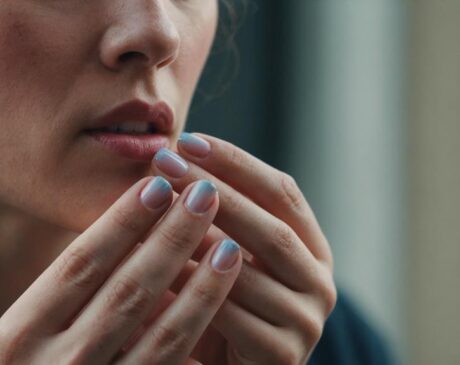Can I Mix Gel and Regular Nail Polish?
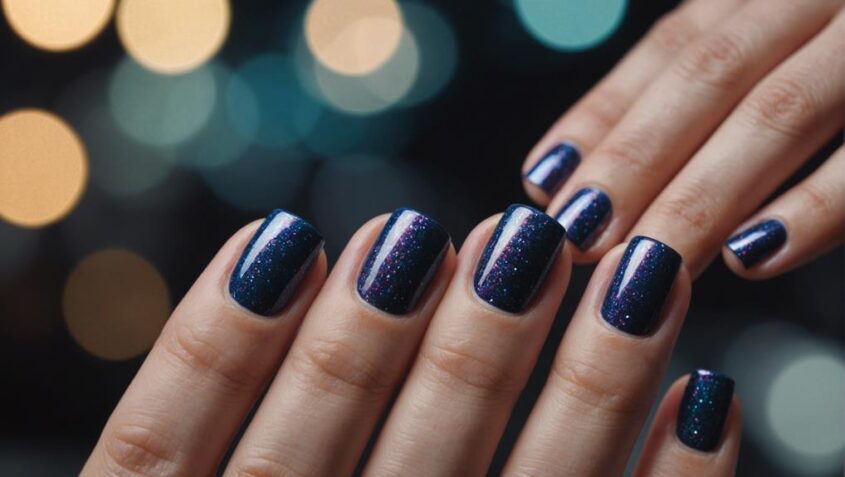
Mixing gel and regular nail polish can enhance durability and offer a unique blend for nail art. Gel polish, cured under UV or LED lamps, lasts longer and resists chipping. Combining both types can create custom colors and designs while maintaining durability. However, differences in application and removal methods should be considered. Starting with clean, dry nails and using compatible base and top coats can improve the outcome. Further insights into the step-by-step mixing process, essential tools, and trendy nail art ideas can help you elevate your nail creativity.
Key Takeaways
- Gel and regular polish can be mixed for unique colors.
- Use a compatible base coat for adhesion.
- Apply regular polish before gel to avoid interference.
- Finish with a top coat for added protection.
- Proper layering techniques ensure a lasting mixed manicure.
Understanding Gel Vs Regular Polish

When considering the differences between gel and regular nail polish, it is essential to understand their distinct compositions and application methods. Gel nail polish, known for its longevity and durability, requires curing under a UV or LED lamp to harden. This curing process creates a strong bond with the nail, resulting in a chip-resistant finish that can last for weeks. On the other hand, regular nail polish air-dries to form a hard finish without the need for curing lamps. While traditional polish offers a wide range of colors and finishes, it typically requires more frequent touch-ups due to its tendency to chip and fade faster than gel polish.
In terms of composition, gel nail polish contains photoinitiators that react to the UV or LED light during curing, causing the polish to harden. Regular polish, on the other hand, dries through the process of solvent evaporation, where the liquid components evaporate, leaving behind a solid colored film on the nail. Understanding these fundamental differences in composition and application methods is crucial when deciding between gel and regular nail polish options.
Benefits of Mixing Nail Polishes
Mixing nail polishes can offer a unique opportunity to create customized color combinations that blend the characteristics of gel and regular polish for enhanced nail aesthetics. When experimenting with mixing nail polishes, the benefits include:
- Unique Colors: By mixing different gel and regular polishes, you can create one-of-a-kind colors that may not be available commercially.
- Enhanced Durability: Combining gel and regular polish can result in a manicure that lasts longer than traditional polish alone.
- Versatility: Mixing nail polishes allows for endless possibilities in creating gradients, ombre effects, or intricate nail art designs.
- Cost-Effective: Utilizing nail polishes you already own can save money compared to purchasing new shades.
- Personalized Style: Customizing your nail color by mixing polishes enables you to express your individuality and creativity in a fun and unique way.
Exploring the art of mixing nail polishes can lead to innovative nail looks that stand out from the crowd.
Potential Challenges to Consider
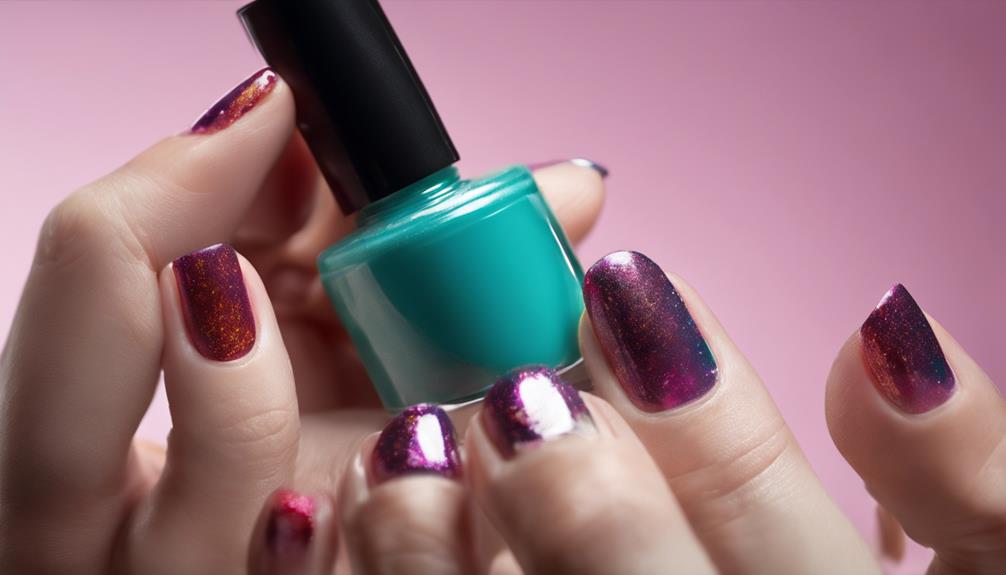
When considering the challenges of mixing gel and regular nail polish, it's important to acknowledge differences in durability between the two types, potential issues with the application process due to varying formulas, and the implications of removal processes on the overall manicure outcome. These factors can impact the overall look and longevity of the nail polish combination, requiring careful consideration before blending gel and regular polishes.
Gel Vs Regular Durability
Comparing the durability of gel nail polish to that of regular nail polish reveals significant differences that may pose challenges when mixing the two.
- Curing Process: Gel polish requires UV or LED light for curing, providing a more durable finish compared to air-dried regular polish.
- Flexibility: Gel polish is more flexible and less prone to chipping than regular polish, which can impact overall longevity.
- Resistance: Gel polish tends to be more resistant to chips, cracks, and smudges, offering extended wear time.
- Maintenance: Regular polish may require more frequent touch-ups and maintenance due to its lower durability.
- Longevity: Gel polish typically lasts longer without losing its shine or color vibrancy, making it a preferred choice for those seeking lasting manicures.
Application Process Differences
Given the distinct differences in durability between gel and regular nail polish, understanding the nuances in the application process becomes imperative when contemplating the integration of both types for a mixed manicure. Gel polish typically requires curing under a UV or LED lamp between each layer, ensuring a durable and long-lasting finish. On the other hand, regular nail polish dries through a process of evaporation, which may not provide the same level of resilience. When combining both, it is essential to apply the regular nail polish before the gel polish to prevent any interference with the curing process. Additionally, using a base coat compatible with both types can help enhance adhesion and prolong the overall wear of the mixed manicure.
Removal Considerations
In the realm of mixed manicures featuring both gel and regular nail polish, the process of removing these combined layers poses unique challenges that warrant careful consideration. When contemplating the removal of gel and regular polish amalgamations, several factors should be taken into account:
- Gel polish may require soaking in acetone for an extended period compared to regular polish.
- The use of acetone can be harsh on the nails and cuticles, necessitating extra care and moisturization post-removal.
- Stubborn glitter or metallic regular polish may be harder to remove alongside gel layers.
- The removal process might take longer due to the different compositions of gel and regular polish.
- It is essential to use proper techniques to avoid damaging the natural nail while removing these mixed layers.
Tips for Mixing Gel and Regular Polish
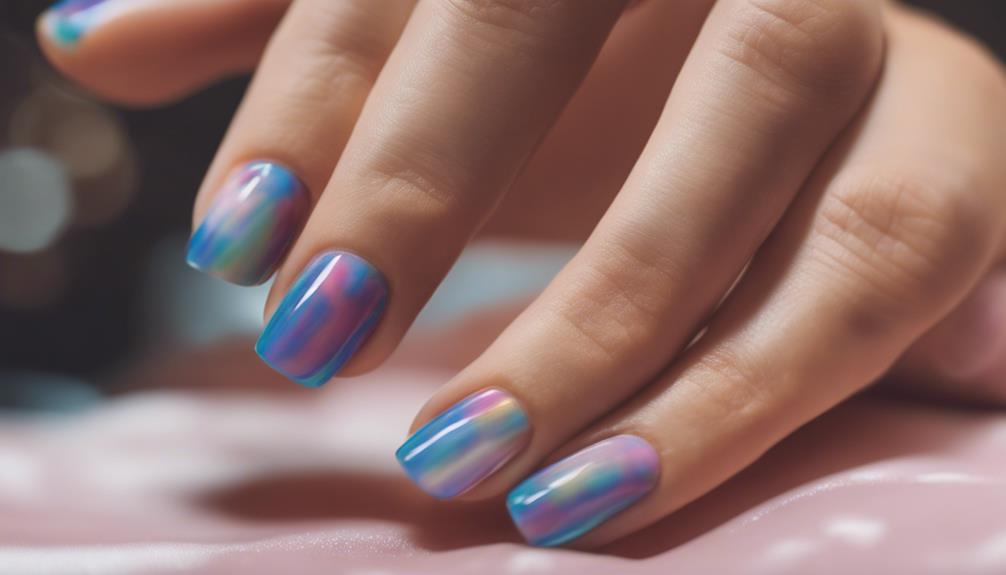
To achieve a seamless and durable manicure when mixing gel and regular nail polish, consider following these essential tips. Firstly, ensure your nails are clean, dry, and free of any oils before applying any polish. This will help the polish adhere better and last longer. Secondly, always use a high-quality base coat before applying any nail polish. A base coat will create a smooth surface for the polish to adhere to, prevent staining, and help extend the wear-time of your manicure.
When mixing gel and regular polish, it is crucial to apply thin layers of each product to prevent bubbling, peeling, or chipping. Allow each layer to dry or cure fully before applying the next one. Additionally, when using gel polish, make sure to cure each layer properly using a UV or LED lamp according to the manufacturer's instructions. Lastly, finish off your manicure with a top coat to seal in the color and add extra shine and protection. By following these tips, you can create a beautiful and long-lasting manicure that combines the best of both gel and regular nail polish.
Tools and Supplies Needed
Before attempting to mix gel and regular nail polish, it is essential to gather the necessary tools and supplies. Having the right equipment on hand can help ensure a smooth and successful blending process. From nail polish removers to mixing tools, each item plays a crucial role in achieving the desired results.
Gel and Regular Compatibility
Ensuring the compatibility of gel and regular nail polish requires specific tools and supplies to achieve optimal results. Here are five essential items for successful mixing:
- Gel Base Coat: Provides a smooth surface for applying regular polish on gel nails.
- LED or UV Lamp: Necessary for curing gel polish but not needed for regular polish.
- Non-Acetone Nail Polish Remover: Ideal for cleaning nails without affecting the gel polish.
- Nail Buffer: Helps in preparing the nail surface for both gel and regular polish application.
- Top Coat: Seals and protects the manicure, ensuring longevity and shine for both types of polish.
Tips for Successful Mixing
In achieving successful mixing of gel and regular nail polish, utilizing the appropriate tools and supplies is paramount. To ensure a seamless fusion of gel and regular nail polish, consider having the following tools and supplies on hand:
| Tools & Supplies | Description | Purpose |
|---|---|---|
| UV/LED Lamp | Professional nail curing lamp | To cure gel polish effectively |
| Nail Buffer | Fine grit buffer | Prep nails for optimal adhesion |
| Base Coat | Gel or regular polish base | Provides a smooth surface |
| Top Coat | Gel or regular polish topcoat | Seals and protects the manicure |
| Nail Cleanser | Cleansing solution | Removes residues for a clean look |
Step-by-Step Mixing Process
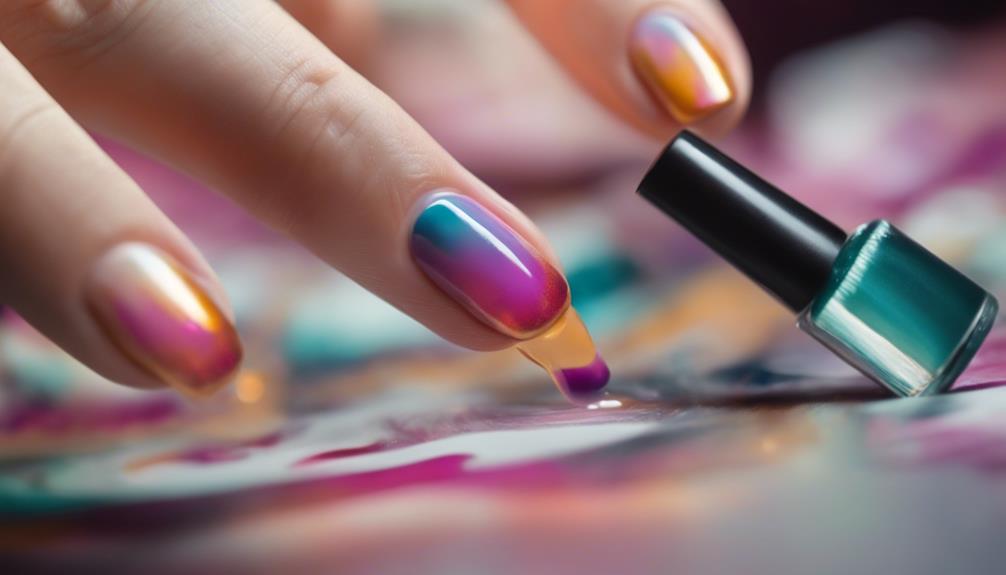
To achieve a seamless blend of gel and regular nail polish, follow this meticulous step-by-step mixing process.
- Prepare Your Nails: Start by ensuring your nails are clean, dry, and free of any old polish to create a smooth base for the mixed polishes.
- Apply Base Coat: Apply a thin layer of base coat to protect your nails and help the mixed polishes adhere better.
- Mix the Polishes: On a clean surface, mix the gel and regular nail polish in equal parts using a nail art brush or a toothpick until you achieve a consistent color.
- Apply the Mixed Polish: Apply the mixed polish in thin, even layers, allowing each layer to dry before applying the next to prevent smudging or bubbling.
- Seal with Top Coat: Once satisfied with the color and coverage, seal the mixed polish with a layer of top coat to enhance shine and prolong the wear of your manicure.
Nail Care and Maintenance
After achieving a flawless mix of gel and regular nail polish, maintaining proper nail care and implementing effective maintenance routines is vital to prolong the longevity and appearance of your manicure. To ensure your nails stay in top condition, consider using a nourishing cuticle oil regularly to keep the skin around your nails hydrated. It is also essential to wear gloves while doing household chores or gardening to protect your manicure from damage. Additionally, filing your nails in one direction and avoiding rough emery boards can help prevent splitting and breakage. When removing polish, opt for acetone-free nail polish removers to prevent drying out your nails. Regularly moisturizing your hands and nails with a rich hand cream can also help maintain the health and flexibility of your nails. By incorporating these simple yet effective nail care practices into your routine, you can enjoy beautiful and long-lasting manicures that showcase your creativity and style.
Trendy Nail Art Ideas

Exploring the latest trends in nail art offers a creative outlet to showcase individual style and express artistic flair through innovative designs and color combinations. Nail art enthusiasts are constantly seeking fresh ideas to adorn their nails. Here are five trendy nail art ideas to inspire your next manicure:
- Negative Space Nails: Utilizing the natural nail color or a clear polish as part of the design to create unique patterns.
- Geometric Shapes: Incorporating triangles, squares, or lines for a modern and edgy look.
- Ombre Nails: Blending two or more colors together seamlessly for a gradient effect.
- Foiled Finish: Adding metallic foil accents to create a luxurious and eye-catching design.
- Abstract Art: Embracing abstract patterns and color combinations for a bold and artistic statement.
These innovative nail art ideas can elevate your style and keep your manicures on-trend.
Frequently Asked Questions
Can I Mix Gel and Regular Nail Polish Brands?
Mixing gel and regular nail polish brands is not recommended as they have different formulas and may not adhere well together. It's best to stick to products from the same line for optimal results.
Will Mixing Gel and Regular Polish Affect Wear Time?
Mixing gel and regular nail polish may impact wear time. The different formulas may not adhere well, leading to chipping or peeling. Experiment cautiously to determine the compatibility of products for optimal results and longevity.
How Do I Remove a Mixed Gel and Regular Polish Manicure?
Removing a mixed gel and regular polish manicure requires strategic steps. Start by soaking a cotton ball in acetone, placing it on the nail, and wrapping it with foil. After 10-15 minutes, gently push off the polish layers.
Is It Safe to Mix Gel and Regular Polish on Natural Nails?
Mixing gel and regular polish on natural nails can compromise the longevity and integrity of the manicure. The different formulas may not adhere well, leading to chipping and peeling. It's recommended to stick to one type for optimal results.
Can I Mix Different Colors or Finishes of Gel and Regular Polish?
Mixing different colors or finishes of gel and regular polish can create unique nail art. Experimenting with combinations can lead to innovative designs. However, ensure compatibility for a lasting and flawless manicure. Practice caution and creativity in your nail styling endeavors.

